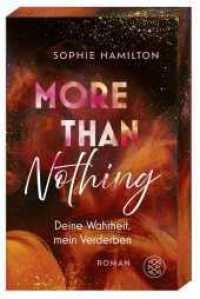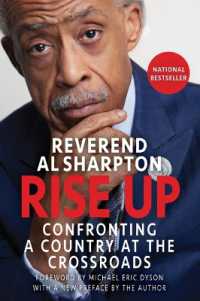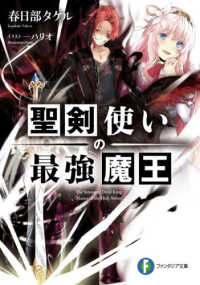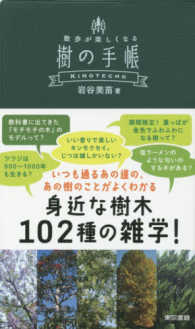Full Description
This volume presents some of the latest research in colour studies by specialists across a wide range of academic disciplines. Many are represented here, including anthropology, archaeology, the fine arts, linguistics, onomastics, philosophy, psychology and vision science. The chapters have been developed from papers and posters presented at the Progress in Colour Studies (PICS12) conference held at the University of Glasgow. Papers from the earlier PICS04 and PICS08 conferences were published by John Benjamins as Progress in Colour Studies, 2 volumes, 2006 and New Directions in Colour Studies, 2011, respectively. The opening chapter of this new volume stems from the conference keynote talk on prehistoric colour semantics by Carole P. Biggam. The remaining chapters are grouped into three sections: colour and linguistics; colour categorization, naming and preference; and colour and the world. Each section is preceded by a short preface drawing together the themes of the chapters within it. There are thirty-one colour illustrations.
Contents
1. Preface; 2. Acknowledgements; 3. Abbreviations; 4. Prehistoric colour semantics; 5. Prehistoric colour semantics: A contradiction in terms (by Biggam, Carole P.); 6. Colour and Linguistics; 7. Preface to Section II; 8. Towards a historical and cultural atlas of colour terms in the Near East: Remarks on GREEN and BLUE in some Arabic and Aramaic vernaculars (by Borg, Alexander); 9. The evolution of GRUE: Evidence for a new colour term in the language of the Himba (by Grandison, Alexandra); 10. Linguistic categorization of BLUE in Standard Italian (by Uuskula, Mari); 11. From blood to worms: The semantic evolution of a Portuguese colour term (by Swearingen, Andrew); 12. The motivational analysis of some Finnic colour terms (by Oja, Vilja); 13. Her blue eyes are red: An idealized cognitive model of conceptual color metonymy in English (by Sandford, Jodi L.); 14. The spread of RED in the Historical Thesaurus of English (by Alexander, Marc); 15. A metaphorical spectrum: Surveying colour terms in English (by Anderson, Wendy); 16. Exploring the metaphorical use of colour with the Historical Thesaurus of English: A case study of purple and lavender (by Hamilton, Rachael); 17. Colour categorization, naming and preference; 18. Preface to Section III; 19. The case for infant colour categories (by Franklin, Anna); 20. Bornstein's paradox (redux) (by Dedrick, Don); 21. Category effects on colour discrimination (by Witzel, Christoph); 22. Colour category effects: Evidence from asymmetries in task performance (by Wright, Oliver); 23. Gender differences in colour naming (by Mylonas, Dimitris); 24. Personality and gender-schemata contributions to colour preferences (by Bimler, David); 25. Axiological aspects of Polish colour vocabulary: A study of associations (by Stanulewicz, Danuta); 26. The metaphysical significance of colour categorization: Mind, world, and their complicated relationship (by Chirimuuta, Mazviita); 27. Colour and the World; 28. Preface to Section IV; 29. Color seeing and speaking: Effects of biology, environment and language (by Plebe, Alessio); 30. Colour terms in the names of coastal and inland features: A study of four Berwickshire parishes (by Dunlop, Leonie); 31. Referential meaning in basic and non-basic color terms (by Anishchanka, Alena V.); 32. Unfolding colour in mind and language: Strategies for colour denotation in Spanish wine-tasting notes (by Mioduszewska, Marzenna); 33. Synaesthetic associations: Exploring the colours of voices (by Moos, Anja); 34. Bach to the blues: Color, music and emotion across cultures (by Prado-Leon, Lilia R.); 35. "Miss Gartside's immediate eye": An examination of Mary Gartside's publications on colour between 1805 and 1808 in the context of illustrated colour literature and paint manuals of the early nineteenth century (by Loske, Alexandra); 36. Lighting up Shakespeare: The metamerism of Jacobean stage lighting using LED technology (by Armstrong, Emma); 37. Index








